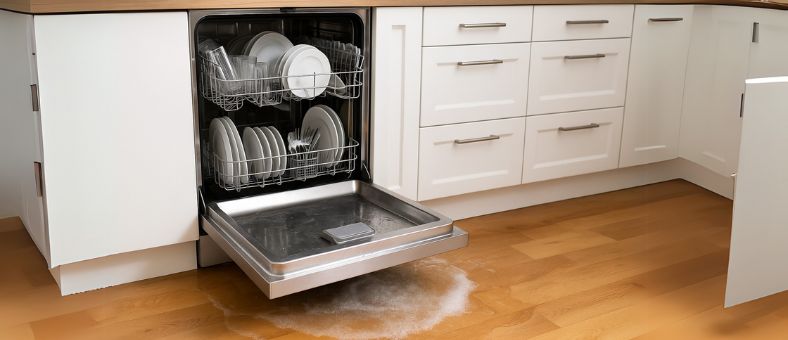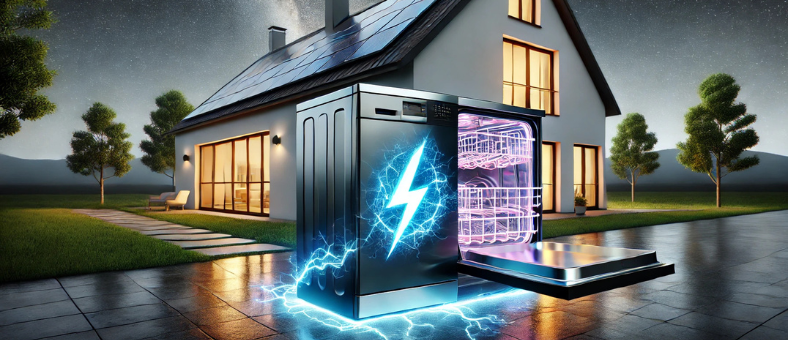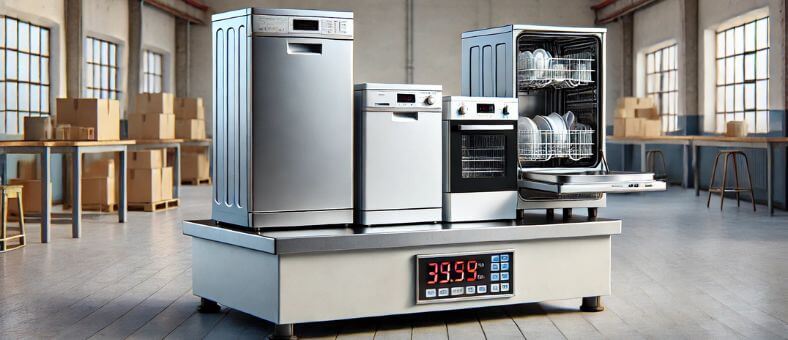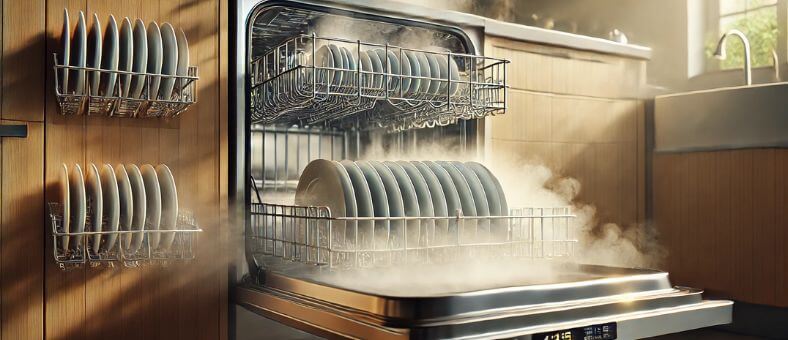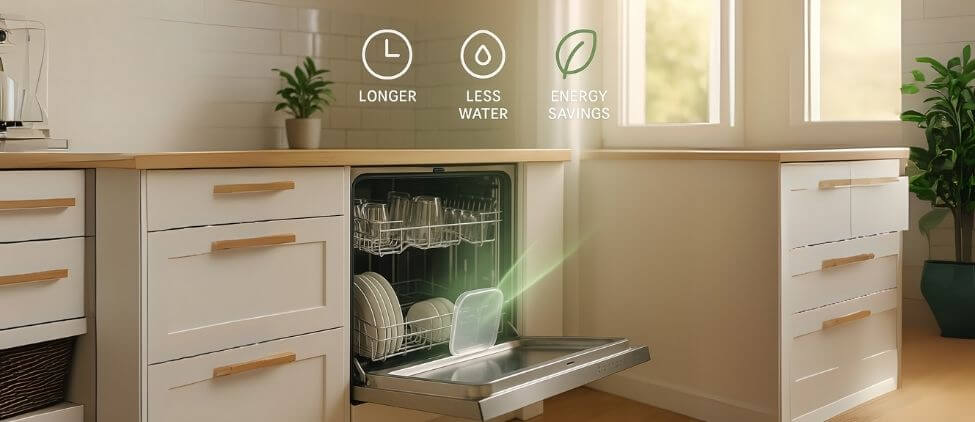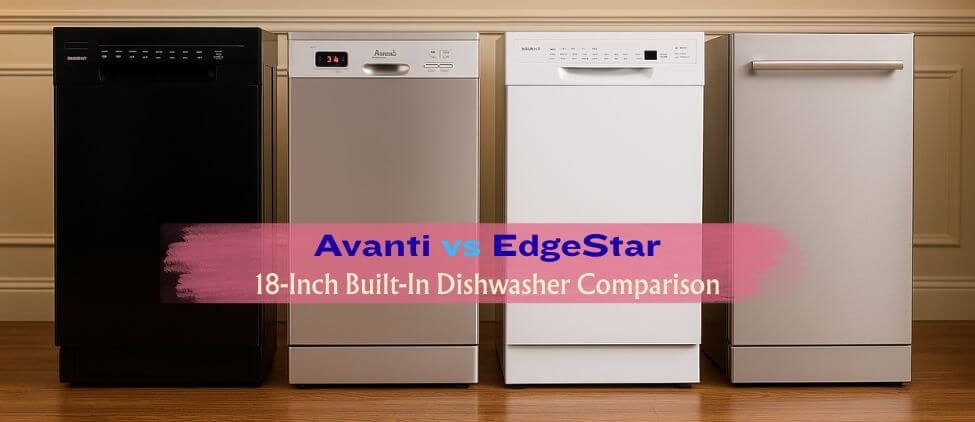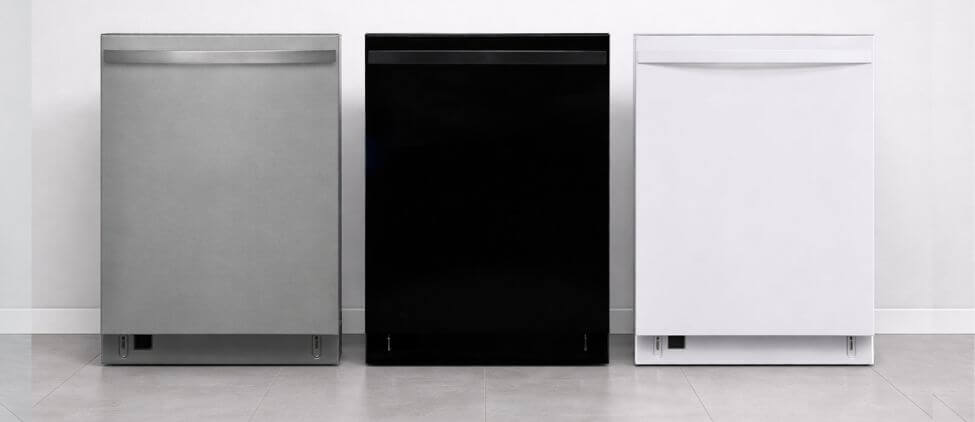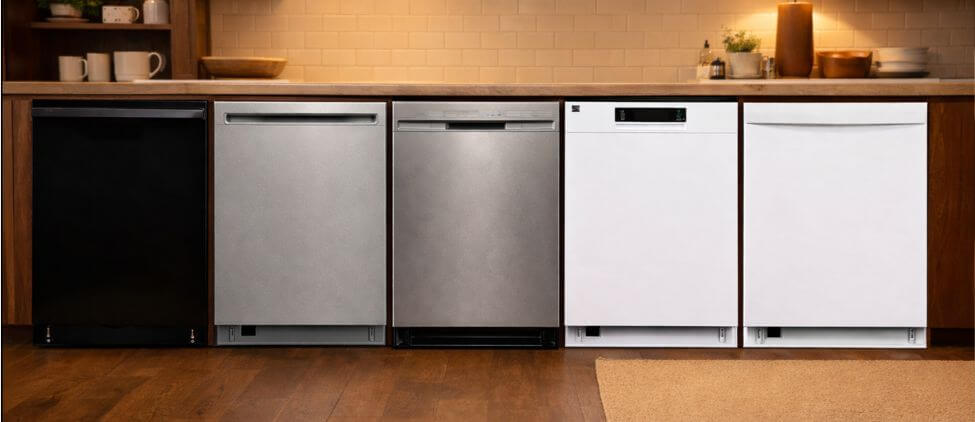Let’s be honest; nothing can ruin your day faster than opening the dishwasher to find a pool of water at the bottom. You probably just want clean dishes, not a mini lake in your kitchen. This is one of those annoying household issues that feels daunting at first, but the good news? Fixing a non-draining dishwasher can often be a straightforward process.
Now, dishwashers are pretty sturdy appliances, but they’re prone to clogs and drainage issues occasionally. It could be a clogged filter, a kink in the drain hose, or even something simple like a blocked air gap. The goal is to walk you through some easy steps; no plumbing degree is required. With just a few tools and a bit of patience, you can probably handle this on your own. And if you need to call in a pro, you’ll at least know what’s going on.
So, let’s dive in and get that dishwasher draining properly again.
Quick Fixes for the Win!
Approximately 60% of non-draining dishwasher issues can be tackled at home without needing a professional technician. With some basic knowledge and determination, you can save time, money and get your dishwasher running smoothly again. Remember, with the right know-how, you’ve totally got this.
Table of Contents
Why is My Dishwasher Not Draining?
So, you’re staring at water pooling at the bottom of your dishwasher; what’s the deal? There are a few common reasons why your dishwasher might refuse to drain. Often, it’s something minor, like a clogged filter or hose, but it can sometimes point to a bigger issue with the drainage system. Here are some typical culprits:
- Clogged Filter: Dishwashers have filters to catch food particles, but these can get blocked over time, leading to drainage problems.
- Kinked or Clogged Drain Hose: The hose that carries water out can get bent or blocked, stopping water from draining properly.
- Garbage Disposal Backup: If your dishwasher shares a line with the garbage disposal, clogged disposal can cause water to back up into the dishwasher.
- Faulty Drain Pump or Solenoid: Sometimes, it’s a part that’s worn out, like the pump or solenoid, which helps move water out of the dishwasher.
Knowing these possibilities gives you a starting point, and now we’ll troubleshoot and fix the problem step-by-step.
Understanding Your Dishwasher’s Drainage System
When it comes to dishwashers, not all drainage systems are created equal. The type of drain connection your dishwasher employs can significantly influence its operation and the potential issues you might encounter. Let’s delve into how you can identify the kind of dishwasher drain connection you have and understand its implications.
01. Direct Connection to the Sink Drain
This is one of the most common connections. The dishwasher drain hose is directly connected to the sink drain, right before the sink’s P-trap. This setup ensures that dirty water from the sink can’t flow back into the dishwasher. You most likely have this connection if you see a hose clamped to the sink drainpipe.
02. Connection via an Air Gap
If you notice a small cylindrical fixture (often metal or plastic) mounted next to your faucet on the kitchen sink, you have an air gap. The dishwasher hose connects to the bottom of the air gap, and another hose runs to the sink drain or garbage disposal. The purpose of this setup is to prevent any dirty water from flowing back into the dishwasher, providing an added layer of protection.
03. Connection to Garbage Disposal
In some households, the dishwasher drain hose connects directly to a garbage disposal unit. If you have this setup, the dishwasher’s water drains through the garbage disposal. It’s essential to remove the knockout plug (a small plastic or metal disc) within the garbage disposal inlet during installation to allow the water to flow.
04. Standalone Connection
In homes with a separate drainage system for the dishwasher, the appliance might have its drainage distinct from the main sink. While this is less common, it’s an efficient setup that ensures the dishwasher’s operation doesn’t interfere with the sink’s use.
Knowing your dishwasher’s setup can make locating and addressing the issue easier. Now, let’s dive into the practical steps to make your non-draining dishwasher draining again.
The Backbone of Proper Functioning
Knowing your drain connection ensures your plumbing system runs efficiently. When things are connected right, everything flows smoothly.
How to Drain Your Dishwasher
Step 1: Turn Off and Empty Your Dishwasher
Before getting hands-on, ensure you’ve safely turned off your clogged dishwasher. This isn’t just about switching off the cycle; ideally, you’ll want to unplug it or turn off the power at the breaker. It’s better to be safe than sorry when dealing with water and appliances.
Once it’s off, empty all the dishes and racks. You’ll need full access to the bottom of the dishwasher, and clearing the space also reduces the chance of breaking any dishes while you’re working. Now, with everything out of the way, you’re ready to tackle the issue.
Step 2: Remove Standing Water
With the dishwasher emptied, it’s time to deal with any standing water at the bottom. This step can get a little messy, but it’s worth it. Grab a cup or a small container and scoop out as much water as you can. When you’ve got most of it out, you can use a sponge or a towel to soak up the remaining water.
This step is crucial because it allows you to see the components at the bottom of the dishwasher more clearly, especially the filter, which is often the root of drainage problems.
Step 3: Check and Clean the Drain Filter
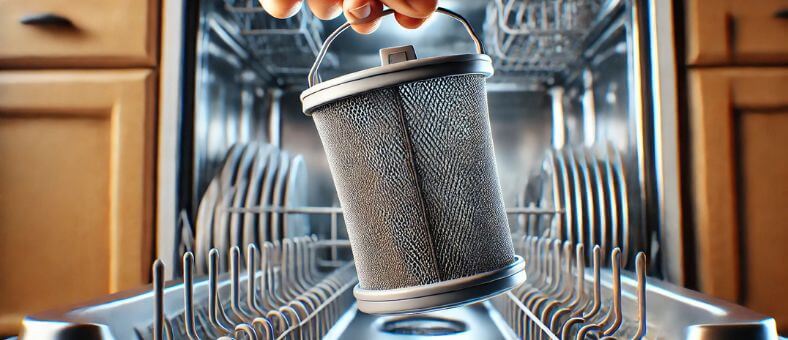
Now that the water’s out of the way, it’s time to inspect the drain filter. This filter catches food particles and debris to keep them from clogging the dishwasher drain, but over time, it can get blocked.
- Locate the Filter: Most dishwashers have a filter located at the bottom, near the back. Look for a small cylindrical or flat component, usually with a twist-lock or clip that holds it in place.
- Remove and Rinse the Filter: Carefully unlock or unscrew the filter and take it out. Rinse it under warm water to remove any trapped food or debris. For stubborn bits, you can use an old toothbrush to scrub it gently.
- Replace the Filter: Once it’s clean, place it back in the dishwasher, ensuring it’s securely fastened. A loose filter can lead to more issues, so make sure it’s snug.
This simple filter cleaning can often resolve drainage problems. Now, with the filter clean, let’s move on to the next steps to ensure there are no other blockages.
I found this video helpful for cleaning a dishwasher filter. Your filter might look a little different, but it still offers great visual guidance.
Step 4: Inspect the Drain Hose for Kinks and Clogs
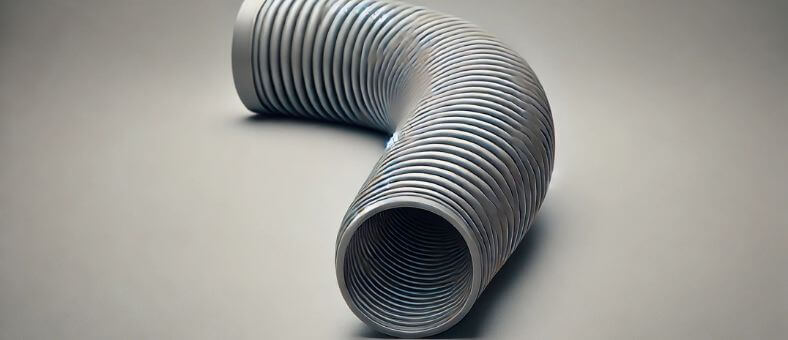
If cleaning the filter didn’t resolve the issue, it’s time to check the drain hose. The drain hose is responsible for carrying water out of the dishwasher, and even a small kink or blockage can cause drainage issues.
- Locate the Drain Hose: You’ll find the hose at the back of the dishwasher, connected to either the sink drain or garbage disposal. You may need to pull the dishwasher out slightly to access it, so be cautious not to tug too hard on any wires.
- Check for Kinks or Bends: Inspect the hose for any obvious kinks or bends. Straighten out any areas that look pinched, as this can prevent water from flowing freely.
- Unclog the Hose: You might have a clog if there’s no visible kink. You can detach the hose at one end (usually with a simple clamp) and use a long, flexible brush or a piece of wire to carefully clear any debris inside.
This simple inspection often fixes drainage issues. Once you’ve checked the hose, reattach it securely and test the drainage.
Take a look at this video to check drain hose kinks. It also covers drain pump inspection, which we’ll dive into in Step 6.
Step 5: Check Garbage Disposal and Air Gap
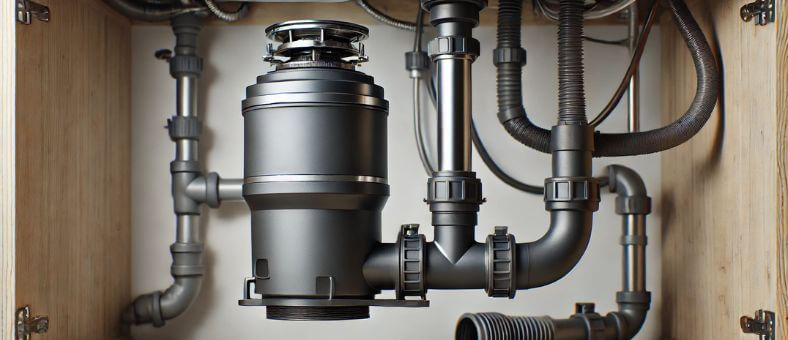
If your dishwasher’s drain hose connects to the garbage disposal or if you have an air gap, either of these could be the problem.
- Run the Garbage Disposal: Sometimes, food waste in the garbage disposal can block the dishwasher’s drain. Please turn on the disposal and run it for a few seconds to clear any potential clogs.
If you want to learn more about garbage disposal, explore it from InSinkErator garbage disposal.
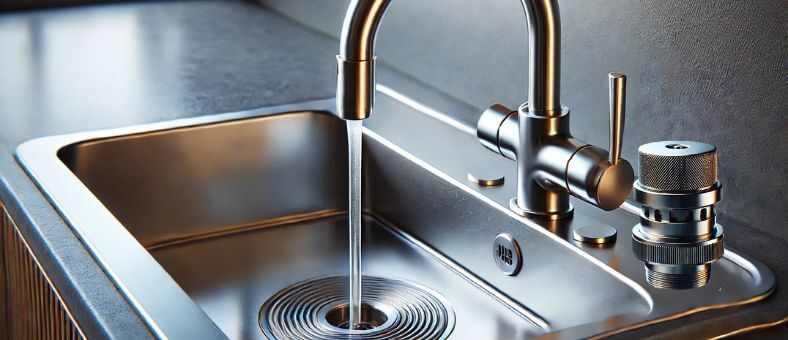
- Inspect the Air Gap: The air gap prevents backflow into the dishwasher but can sometimes get clogged. To check it, twist off the cap, then look inside for any debris. You can use a brush or a small piece of wire to clear out any clogs you see.
This simple check often clears up drainage issues caused by backflow, so it’s worth giving it a quick look.
Check out this video to learn how to open your air gap. While the video doesn’t cover inspecting the air gap, ensure you do that. And we’ve already looked at the drain hose in Step 4, haven’t we?
Step 6: Inspect the Drain Pump and Solenoid
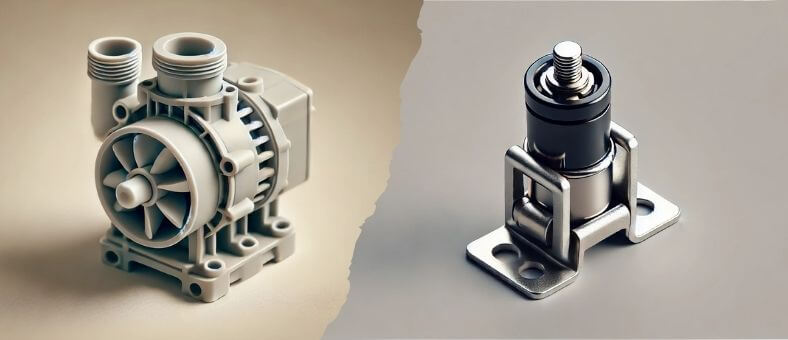
If everything looks clear so far, the problem could lie with the drain pump or solenoid. These parts help control the water flow out of the dishwasher and can wear out over time.
- Drain Pump Inspection: The drain pump is located at the bottom of the dishwasher. You’ll need to remove the bottom panel to access it. Look for any obvious signs of wear or clogging around the pump, and clean out any debris.
- Solenoid Test: The solenoid is a small part that controls the drain valve, allowing water to exit. If the solenoid is faulty, it might prevent the dishwasher from draining.
Use a multimeter to test if the solenoid is working. If not, you may need to replace it.
These steps cover the more technical components, and if they’re the issue, they might require a bit more care to replace or repair.
If you’re wondering where to find the solenoid, check out the video below. If checking the solenoid feels too technical, just follow the other steps to resolve the draining issue. And if you need more help, there’s a section below on when to call a professional plumber.
Step 7: Examine the Drain Impeller and Check Valve
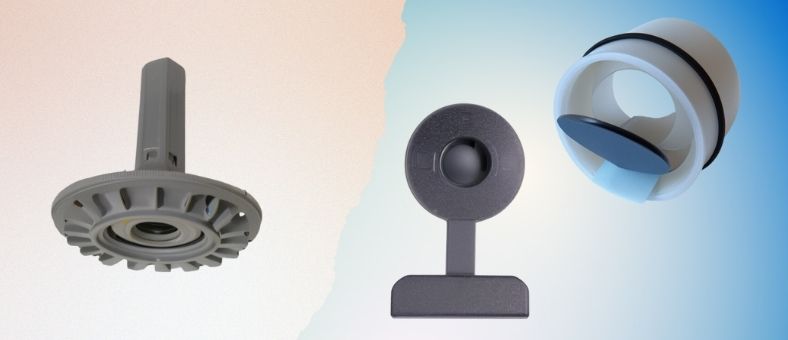
If the problem persists, it’s time to inspect the drain impeller and the check valve. These parts play a crucial role in moving water out of the dishwasher.
- Drain Impeller Check: The impeller is a small part of the pump that helps push water out of the dishwasher. Over time, it can get damaged or clogged. To access it, you may need to remove the lower panel of the dishwasher. Check the impeller for any cracks, broken pieces, or obstructions. If damaged, replacing it might be necessary to unclog your dishwasher.
- Inspect the Check Valve: The check valve prevents backflow, ensuring that drained water doesn’t flow back into the dishwasher. If it’s clogged or malfunctioning, water might remain in the dishwasher. Look for any debris or signs of wear around the check valve. Clean it out or replace it if it appears faulty.
These components are less likely to need attention, but a quick check can sometimes reveal the root of a stubborn drainage issue.
Here’s a quick video on the check valve. Your dishwasher’s check valve might look a bit different, but this gives a good visual to help you get the idea.
Step 8: Reset the Dishwasher or Run a Test Cycle
After cleaning, inspecting, and repairing any parts, it’s time to test your work.
- Reset the Dishwasher: Many dishwashers have a reset button or reset sequence (consult your user manual). Resetting helps clear any error codes and prepares the machine for a fresh cycle.
- Run a Test Cycle: Choose a quick cycle and watch to see if the dishwasher drains correctly. If it does, congratulations. You’ve solved the problem. If not, it might be time to consider professional help.
Testing ensures everything is working as it should, and if you’ve made it this far, there’s a good chance your dishwasher will be draining smoothly again.
To make things easier, here’s a handy infographic that breaks down all the steps below in a simple, easy-to-follow format;
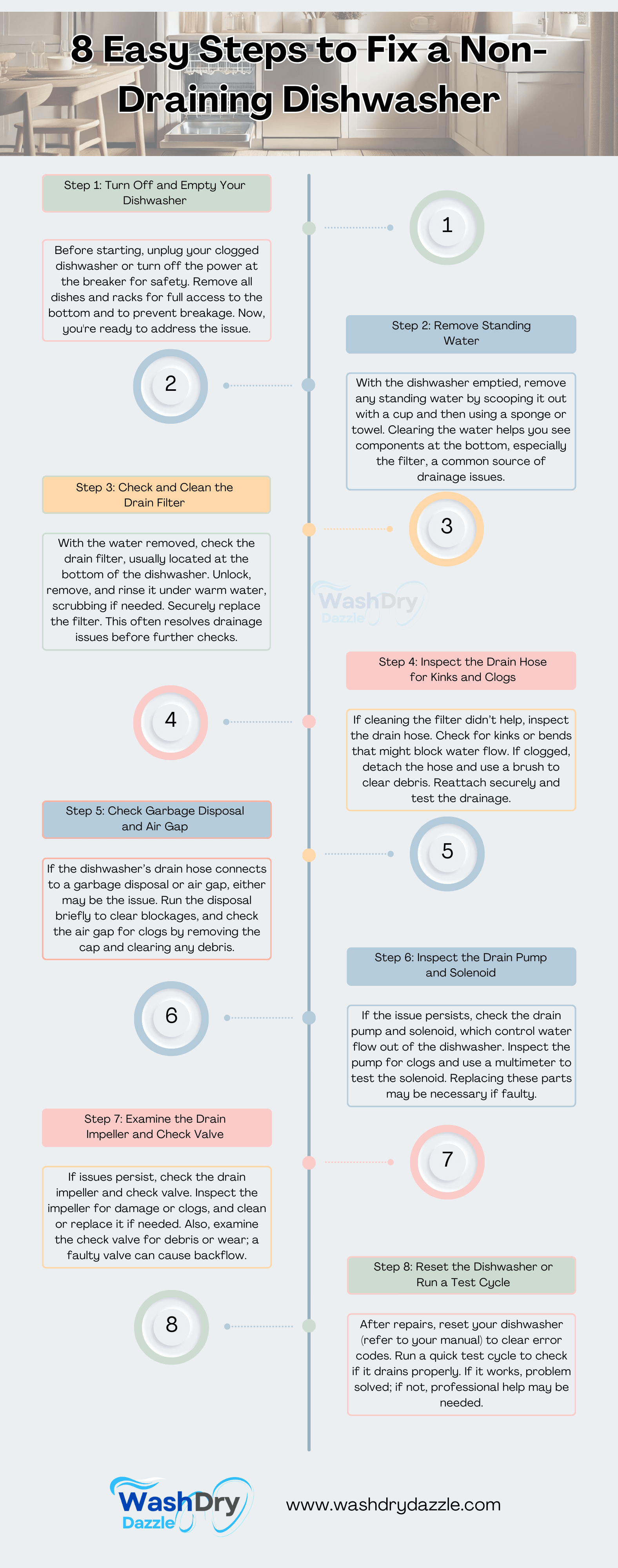
When to Call a Professional Plumber
If you’ve gone through all the steps and your non-draining dishwasher is still showing issues, it might be time to bring in a pro. Sometimes, the issue can be hidden within the internal plumbing or be due to a more serious mechanical problem that requires specialized tools or expertise to diagnose. Here are some signs it’s best to call a professional:
- Persistent Water Pooling: Even after cleaning and checking all accessible parts, water keeps pooling at the bottom.
- Unusual Noises: Strange grinding or buzzing sounds may indicate issues with internal parts like the motor or pump.
- Leaks or Electrical Issues: Water leaks or electrical malfunctions are both best left to licensed professionals, as they can be dangerous to handle.
Calling a plumber might seem like a hassle, but it can often save you time, money, and frustration in the long run by quickly identifying and fixing the problem. Find qualified professional plumbing services through the Plumbing-Heating-Cooling Contractors Association‘s contractor directory.
Listen to Your Machine!
Strange noises or decreased performance can indicate that parts are wearing out. Don’t ignore these cries for help; act sooner rather than later.
Preventing Future Dishwasher Clogs

Once your dishwasher is back in action, keeping it that way is key. Regular maintenance can go a long way in preventing future drainage problems. Here are a few simple tips to help you avoid clogs down the road:
- Clean the Filter Regularly: Aim to clean the filter every couple of weeks to prevent food buildup and consequently prevent water pooling in the dishwasher.
- Rinse Dishes Before Loading: While dishwashers are designed to handle a bit of food residue, scraping and rinsing plates can reduce the load on the drain filter and hose.
- Use Dishwasher Cleaner Monthly: Running a cycle with dishwasher cleaner helps break down grease and limescale that can clog the machine. For sparkling clean dishes, many experts recommend Cascade Dishwasher Cleaners.
- Clean the Spray Arms and Door Seals: These parts are prone to buildup, so giving them a quick clean every now and then helps keep everything flowing smoothly. Check out our guide to clean the spray arms.
- Inspect the Drain Hose Annually: Take a quick look at the drain hose once a year to ensure it’s not kinked or clogged.
These maintenance steps are simple but effective ways to keep your dishwasher running smoothly and avoid future drainage issues. To maintain your dishwasher and extend its life span, visit our guide on How to Extend Dishwasher Life.
Final Thoughts on the Non-Draining Dishwasher Problem
There you have it. Fixing a dishwasher that won’t drain isn’t as intimidating as it seems, right? With just a few simple tools and these step-by-step instructions, you’ve likely saved yourself a call to the plumber and a whole lot of hassle. Whether it was a clogged filter, a kinked hose, or a quick check of the garbage disposal, these small fixes can make a big difference. And now that you know the tricks, a bit of routine maintenance will keep your dishwasher draining like a pro. So next time water starts pooling, you’ll be ready.
Frequently Asked Questions(FAQs)
Are certain dishwasher brands more prone to draining issues than others?
Yes, some dishwasher brands are more prone to draining issues due to differences in component design or quality. Checking product reviews and customer feedback can help guide your purchase.
Do all dishwasher brands use the same method of drainage?
While the primary mechanism of draining water is consistent across brands, the design, pathway, and even the pump’s power might differ. These variations can lead to brand-specific draining problems.
Are there universal solutions to draining issues across different dishwasher brands?
Some general troubleshooting steps apply to most brands, like checking for clogs in the drainage hose or ensuring the filter is clean. However, for brand-specific solutions, always refer to the manufacturer’s guidelines.
Can manual draining damage my dishwasher?
Manual draining shouldn’t damage your dishwasher if done correctly and gently. However, using excessive force or sharp objects can harm the interior surfaces.
Do dishwasher cycle issues affect its draining function?
Yes, cycle issues can affect a dishwasher’s draining function. Faulty sensors, timers, or control boards may stop it from entering the drain phase, while incomplete cycles, pump issues, or blockages can also impede draining. Regular maintenance can help resolve these problems.
Read More
Keeping Your Dishwasher in Top Shape
Keeping your dishwasher clean and running smoothly is key to maintaining its performance and extending its lifespan. Here are some helpful reads from our site to ensure your appliance stays in top condition for years to come:
- Is Pre-Rinsing Necessary? Dishwasher Myths Busted
- The Dishwasher’s Impact on Knives: What You Need to Know
- Why Does the Sink Fill Up When Running the Dishwasher?
- How Much Water Do Dishwashers Use?
- How to Clean Dishwasher Spray Arms?
Explore More Articles to Improve Your Dishwashing Skills
- Stainless Steel vs. Plastic Tub Dishwashers: Which is Better?
- First Time Using a Dishwasher? The Ultimate Beginner’s Guide!
- Dishwasher Myths: 7 Shocking Truths You Must Know!
- How to Dispose of and Recycle a Dishwasher?
- Heat Dry vs. Air Dry
WashDryDazzle is committed to delivering valuable insights and meticulously compiled lists, ensuring you discover the best products to meet your requirements. We also provide extensive dishwasher guides and expert education to help you maintain proper appliance care and management.

